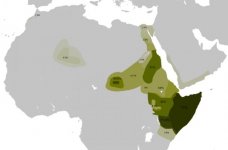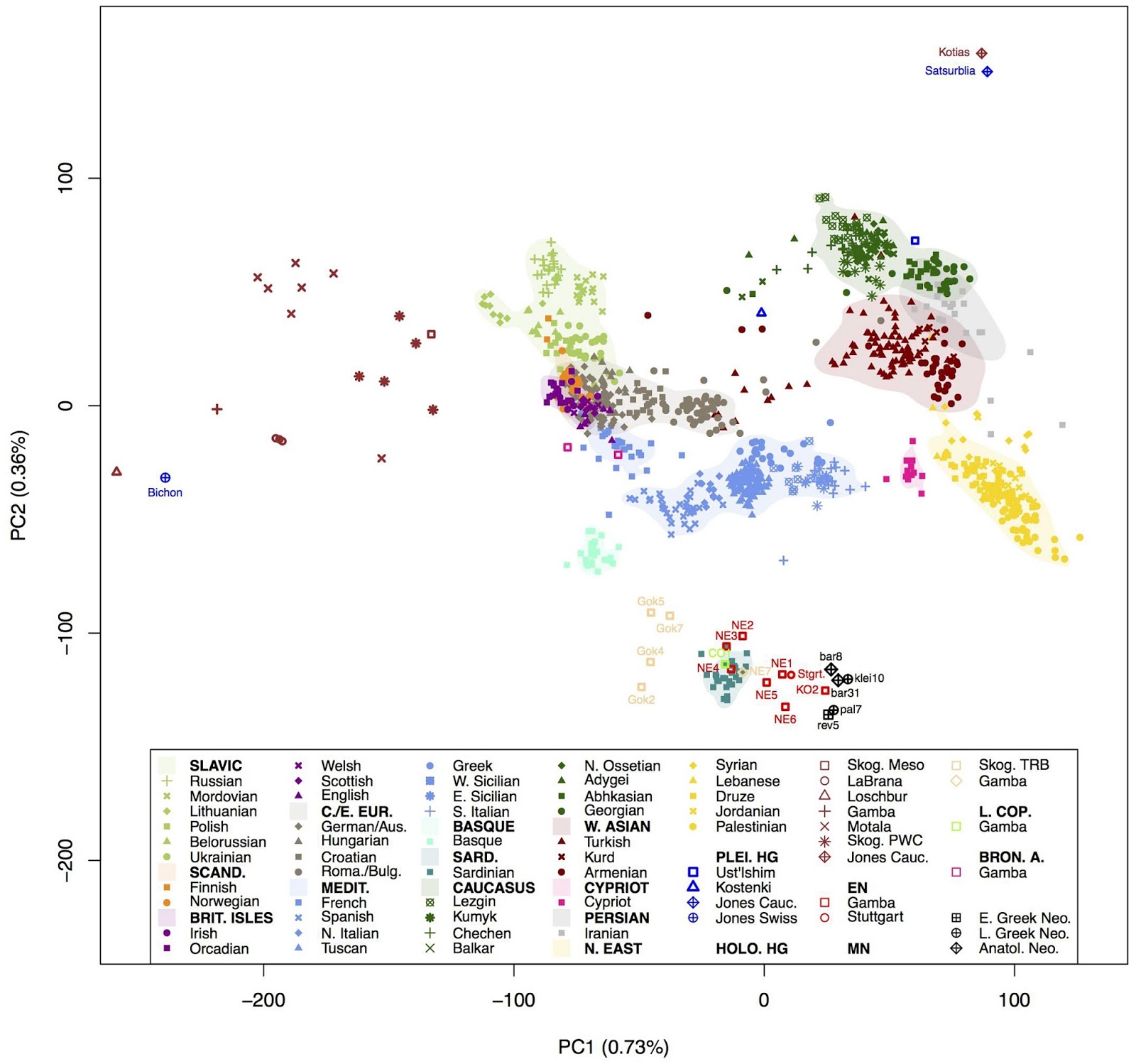Arabs are J1-P58.
Their origin is the Levant as Arab is a west-Semitic language.
They probably arrived in the Levant during Levantine EBA, as Levant BA is 44 % Iran Chl.
They moved into Arabia not earlier than ca 5 ka, way after Natufian era.
The Nabateans that moved into the area after the deportation of the Israelites by the Assyrians was probably an Arab backmigration. That was 6th cent. BC.
I agree with all that. I just think that yDna is sometimes a poor predictor of total genomic "identity", and particularly so in Arabia.
Angela, this might be very interesting.
So N-Africa is 80 % Levant Neo and just 20 % SSA.
Are Berbers also 80 % Levant Neo?
Till now we only know for sure E1b1b1b2-Z830 is Natufian.
If Berbers are Levant Neo we can be sure E1b1b1b-Z827 is Natufian.
In that case Berbers are a backmigration into Africa as cattle or ovicaprid herders.
It was the Sahawaris who got that score. However, I'm exercising some caution since this is a preliminary run, and he says Iran Neolithic will increase somewhat in subsequent runs, as I would expect it to. We've known for a long time from other calculators, however, that North Africans don't have very much "Caucasus", so I don't expect the general parameters to be very much different.
My speculation has always been that this would be the case for North Africans, although I used to frame it as a two pronged movement of the Neolithic from the Near East, both moving east to west, but one along the North Mediterranean and one along the South Mediterranean. That isn't to say that their own hunter-gatherers didn't contribute something to their genomes. We've seen from other calculators that there's some WHG in them, for example, particularly as you head westward.
The gene flow, no matter the era, has always been from the Near East and from the rest of Africa, with perhaps a bit from north of Gibraltar.
This makes sense of how 23andme has seen the split in the Near East, with Palestinians and Jordanians clustering more with Egyptians than with Anatolians. Some of that may have to do with the slave trade, with movements north into Gaza of Egyptians etc., but a lot of it has to do with old divisions within the Near East itself.
Oh, Somalis are slightly different. Provisionally, this is what they're getting:
Natufian: 52%
SSA: 45-46%
Indians are getting a ton of Iran Neolithic. Iran Neolithic itself gets a bit of ASI in his analysis, which doesn't surprise me at all.
Phenotypes do really tell you a bit about admixture if you pay close attention. As Kurd mentioned, it's sometimes difficult to tell the difference between a northwest Indian and an Iranian. It even happens with Armenians.
The same applies to North Africa. There are a few tribes which have very little SSA, so you can occasionally find North Africans who to my eyes just look like Southern Europeans, and some look like Near Easterners.
If someone told me Emmanuelle Chriqui was Spanish, I wouldn't doubt it for a second.







